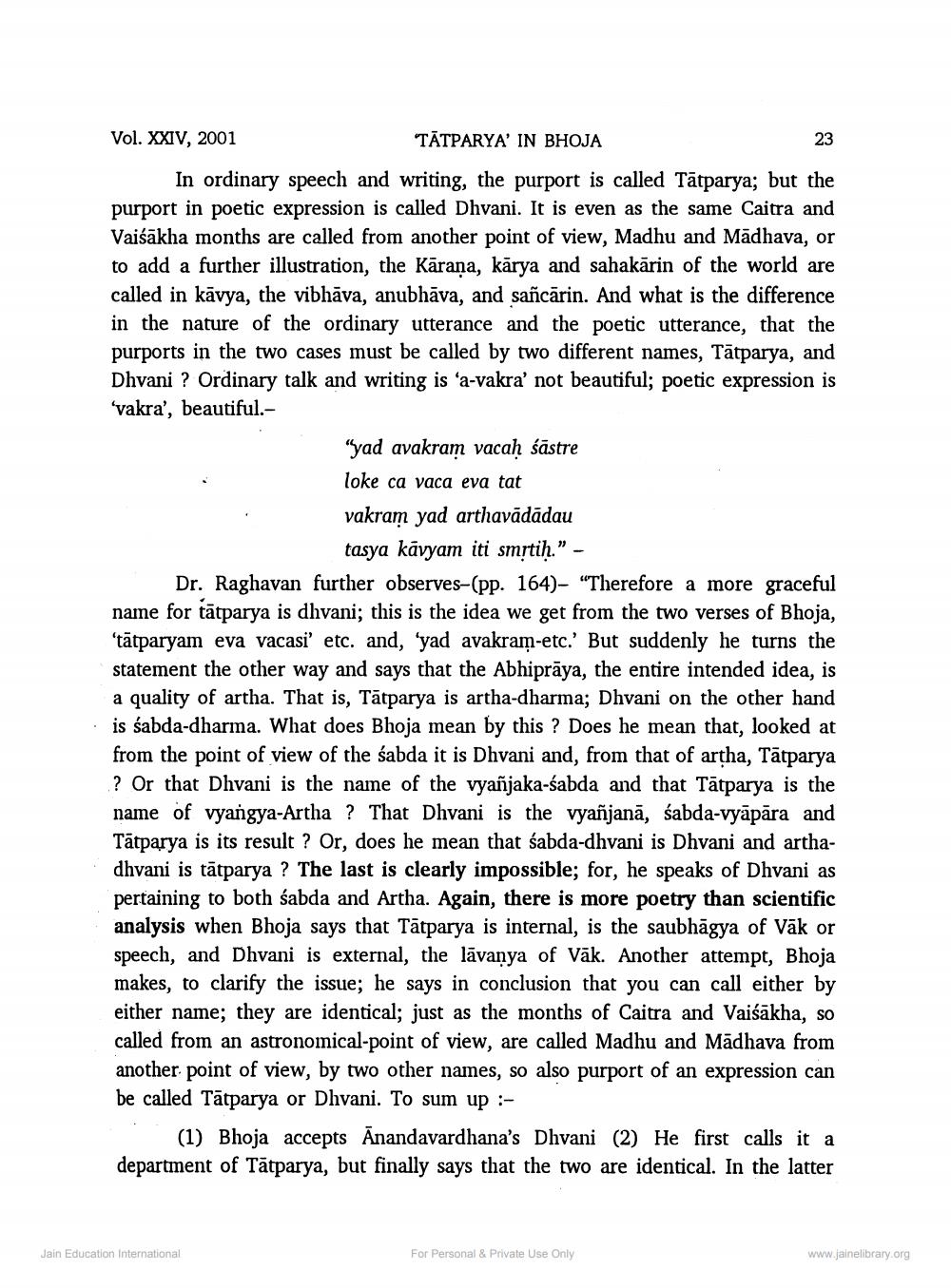________________
Vol. XXIV, 2001
TĀTPARYA' IN BHOJA
23
In ordinary speech and writing, the purport is called Tātparya; but the purport in poetic expression is called Dhvani. It is even as the same Caitra and Vaišākha months are called from another point of view, Madhu and Madhava, or to add a further illustration, the Kārana, kārya and sahakārin of the world are called in kavya, the vibhāva, anubhava, and sancarin. And what is the difference in the nature of the ordinary utterance and the poetic utterance, that the purports in the two cases must be called by two different names, Tātparya, and Dhvani ? Ordinary talk and writing is 'a-vakra' not beautiful; poetic expression is 'vakra', beautiful.
"yad avakram vacaḥ śāstre loke ca vaca eva tat vakram yad arthavādādau
tasya kavyam iti smrtih." Dr. Raghavan further observes-(pp. 164)- "Therefore a more graceful name for tātparya is dhvani; this is the idea we get from the two verses of Bhoja, 'tātparyam eva vacasi' etc. and, 'yad avakram-etc.' But suddenly he turns the statement the other way and says that the Abhiprāya, the entire intended idea, is a quality of artha. That is, Tātparya is artha-dharma; Dhvani on the other hand is sabda-dharma. What does Bhoja mean by this? Does he mean that, looked at from the point of view of the sabda it is Dhvani and, from that of artha, Tātparya ? Or that Dhvani is the name of the vyañjaka-sabda and that Tātparya is the name of vyangya-Artha ? That Dhvani is the vyañjanā, sabda-vyāpāra and Tātparya is its result ? Or, does he mean that sabda-dhvani is Dhvani and arthadhvani is tātparya ? The last is clearly impossible; for, he speaks of Dhvani as pertaining to both sabda and Artha. Again, there is more poetry than scientific analysis when Bhoja says that Tātparya is internal, is the saubhāgya of Vāk or speech, and Dhvani is external, the lāvanya of Vāk. Another attempt, Bhoja makes, to clarify the issue; he says in conclusion that you can call either by either name; they are identical; just as the months of Caitra and Vaišākha, so called from an astronomical-point of view, are called Madhu and Madhava from another point of view, by two other names, so also purport of an expression can be called Tātparya or Dhvani. To sum up :
(1) Bhoja accepts Anandavardhana's Dhvani (2) He first calls it a department of Tātparya, but finally says that the two are identical. In the latter
up.
Jain Education International
For Personal & Private Use Only
www.jainelibrary.org




